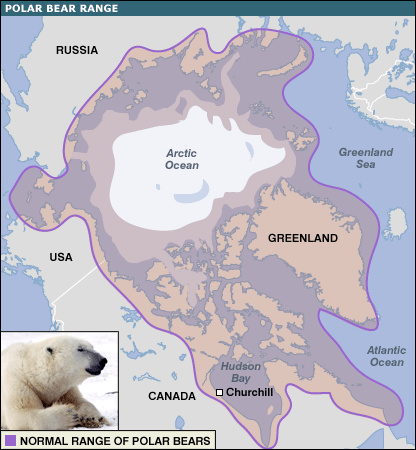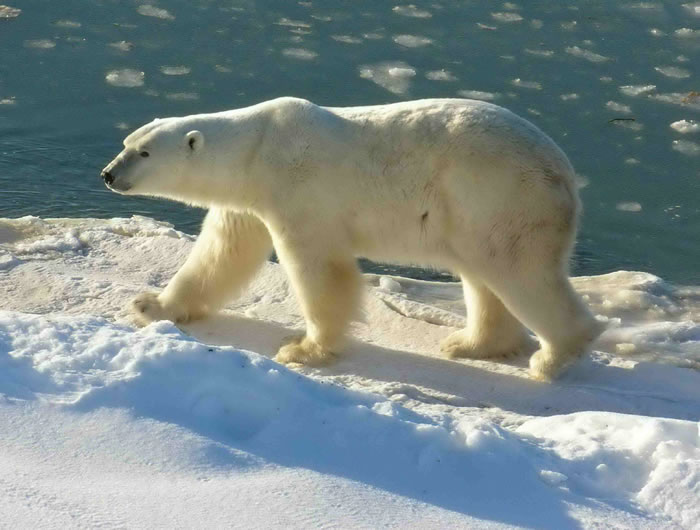 |
Canku Ota
|
 |
|
(Many Paths)
|
||
|
An Online Newsletter
Celebrating Native America
|
||
|
February
2014 - Volume 12 Number 2
|
||
|
|
||
|
Basic Facts About
Polar Bears
|
||
|
by Defenders of Wildlife
|
||
|
Polar bears are the largest land carnivores in the world, rivaled only by the Kodiak brown bears of southwestern Alaska. Polar bears sit at the top of the food chain in the biologically rich Arctic. The most carnivorous of the bear species, polar bears feed primarily on the fat of ice-dependent seals. The remains of these seals provide food for many other Arctic wildlife species, giving polar bears a vital role in their ecosystem.
Polar bears are marine mammals, and spend much of their time on Arctic sea ice. Many adaptations make polar bears uniquely suited to life in icy habitats. Their fur is thicker than any other bears’ and covers even their feet for warmth and traction on ice. A thick layer of blubber beneath their fur provides buoyancy and insulation. The long neck and narrow skull of the polar bear probably aid in streamlining the animal in the water while warming the air that they breathe, and their front feet are large, flat and oar-like, making them excellent swimmers.
Diet Population Range & Habitat As the sea ice advances and retreats each season, individual polar bears may travel thousands of miles per year to find food. Polar bears are distributed throughout the Arctic region in 19 subpopulations, including Alaska, Canada, Russia, Greenland and Norway.
Behavior Unlike brown bears, males and non-breeding females do not hibernate in the winter.
Reproduction
|
||||||||||||||||||
 |
|
|
||
|
|
||
| Canku Ota is a free Newsletter celebrating Native America, its traditions and accomplishments . We do not provide subscriber or visitor names to anyone. Some articles presented in Canku Ota may contain copyright material. We have received appropriate permissions for republishing any articles. Material appearing here is distributed without profit or monetary gain to those who have expressed an interest. This is in accordance with Title 17 U.S.C. Section 107. | ||
|
Canku Ota is a copyright ©
2000 - 2014 of Vicki Williams Barry and Paul Barry.
|
||
 |
 |
|
|
The "Canku
Ota - A Newsletter Celebrating Native America" web site and
its design is the
|
||
|
Copyright ©
1999 - 2014 of Paul C. Barry.
|
||
|
All Rights Reserved.
|
||

